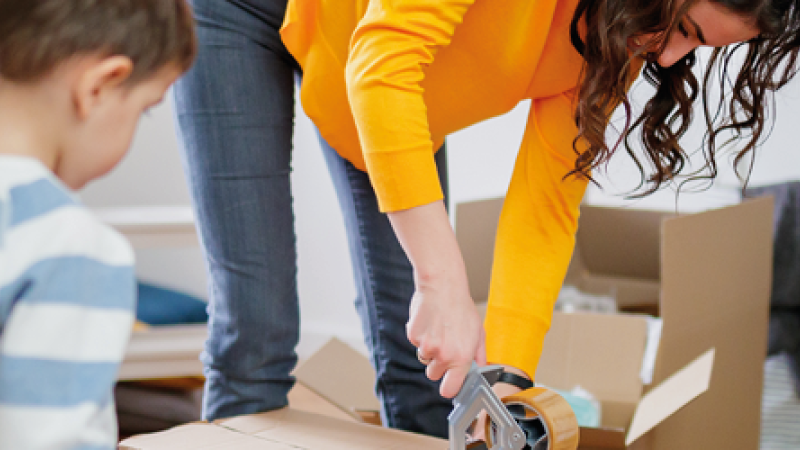EVACUATION AND EMERGENCY EXITS
-Ensure that the dwellings have escape routes.
-Keep escape routes clear at all times: balconies, emergency exits, stairwells, corridors, etc.
-Leave the building as soon as possible by the nearest safe exit when a fire alarm sounds in the building.
-Plan ahead an evacuation plan with two means of evacuation for each dwelling and a meeting point outside.
-Practice the evacuation plan with all the occupants by organizing evacuation exercises twice a year.
FIRE EXTINGUISHERS AND HYDRANTS
-Install one or more type «A, B, C» powder extinguishers in an accessible location (next to an exit, away from potential fire sources such as the stove and heating appliances) but out of the reach of children.
-Properly follow the maintenance instructions for each portable fire extinguisher.
-Do not plant hedges, shrubs or trees and do not install fences, carports within 1.5 meters of a fire hydrant.
-Keep access to fire hydrants unobstructed for a distance of 1.5 meters (snow, wastes, etc.)
For more information: Fire Hydrants
STORAGE AND WAREHOUSING
-Do not accumulate or store combustible materials or flammable liquids indoors.
-Never use the oven and the top of the stove as storage space, even temporarily.
-Store equipment with lithium-ion rechargeable batteries in a location where there is a smoke alarm.
For more information: Storage
SMOKE ALARMS AND CARBON MONOXIDE
-Have at least one smoke alarm per floor, including the basement.
-Residential buildings built before 1985 must be equipped with smoke alarms connected to an electrical system or with a long-life 10-year lithium battery.
-Buildings built after 1985 must be equipped with smoke alarms connected to an electrical system.
-Refer to the manufacturer’s manual or to our FAQ for the installation.
-Maintain alarms and keep them in good condition.
-Test the devices with the test button.
-It is required to install a carbon monoxide detector if your dwelling has direct access to a garage or if it has a combustion device such as wood, propane or natural gas fireplace or oven.
For more information: Smoke alarms
HEATING
-Do not leave auxiliary heaters running unattended.
-Have heating systems running on fuel periodically checked (natural gas, fuel oil, etc.) by a certified professional.
-Keep a clear space of one meter around the furnaces and of 10 cm around electric baseboards.
-Report solid fuel heating systems even if they are no longer in use.
For more information: Exposure to carbon monoxide, heating, heating during intense cold and gas fireplaces.
HOME APPLIANCES
-Leave the cooking surface and oven free of objects when not used.
-Use cooking appliances (BBQ, portable stoves, etc.) only outdoors.
-Have any dryer installed by a professional.
-Ensure that the dryer has a lint filter.
-Clean the lint filter before or after each use of the dryer including in the laundry room. Also remove foam residues that accumulate near the filter.
For more information: Household dryers
ELECTRICITY
-Use a qualified electrician for all electric repairs and installations.
-Use flexible cords of good caliber especially for energy-intensive equipment such as an air conditioning unit.
-Use a multi-outlet adapter with an integrated circuit breaker when connecting several devices on the same circuit.
-Avoid permanently installing extension cords; and replace them when they are damaged.
For more information: Electricity
SAFE BEHAVIORS
Smokers’ items and cigarette butts
Cooking food, barbecue cooking and fondue burners




